Photos: Kangaroos Use Tails to Walk
Kangaroo news
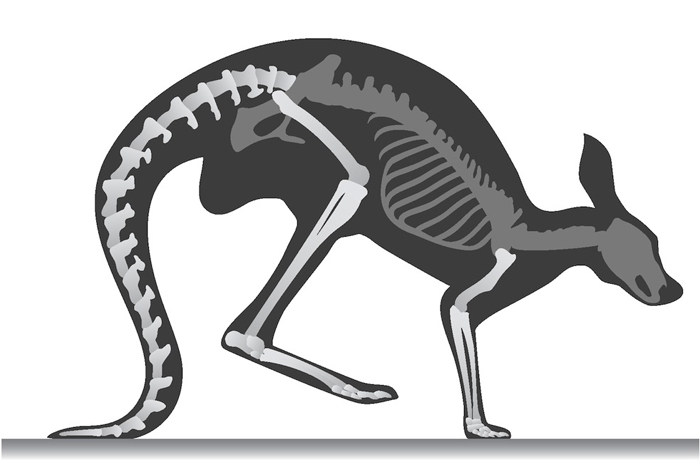
Kangaroos walk using all four limbs and their tails more often than they hop on their hind legs, and new research published July 1, 2014 in the journal Biology Letters finds that their tails actually act as a fifth leg. Here, an illustration of the kangaroo's fore limb, hind limb and tail bones. [Read More: Kangaroos Use Tails as Extra Legs]TKTK
Comparing inside and out

Red kangaroos (Macropus rufus) like this one are the largest of the kangaroos and the largest living marsupials, with males reaching 4.3 to 5.3 feet (1.3 to 1.6 meters) in total body length and females reaching (0.85 to 1.2 m) in body length, according to the University of Michigan, Museum of Zoology. Here, an illustration of a kangaroo's skeletal structure alongside a photograph of a red kangaroo mid-stride.
Walk this way!

Kangaroos walk by moving their front limbs in unison and then dropping their tail to the ground to provide support and propulsion while swinging their back limbs forward. Red kangaroos typically hang out with about 10 individuals, called a mob, made up mostly of females and their offspring, according to the Museum of Zoology.
Measuring the force
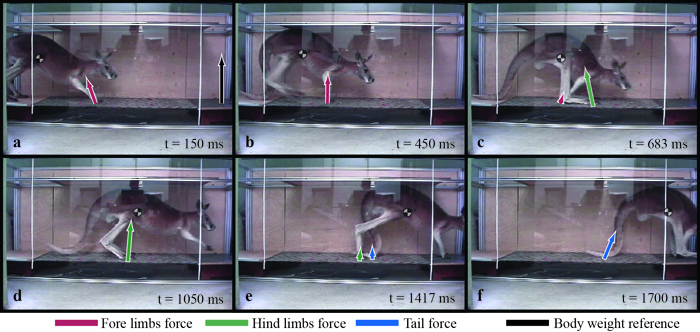
A series of video stills show a red kangaroo walking along a force-measuring plate.
Showing the force
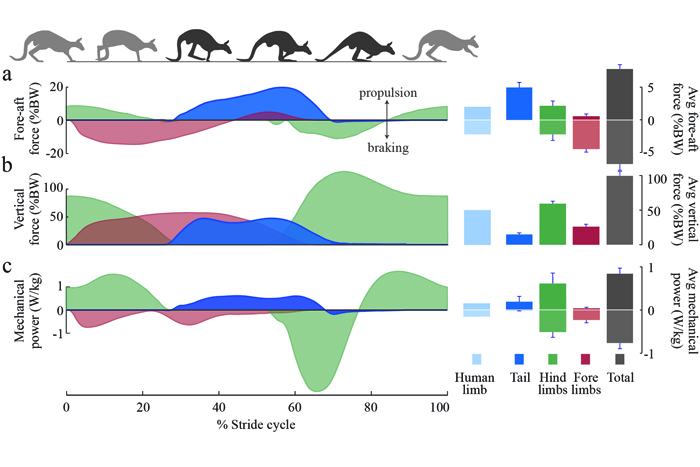
A graph shows the force and power generation by each limb as a kangaroo walks, showing how the marsupial uses its tail as a sort of limb.
Standing still
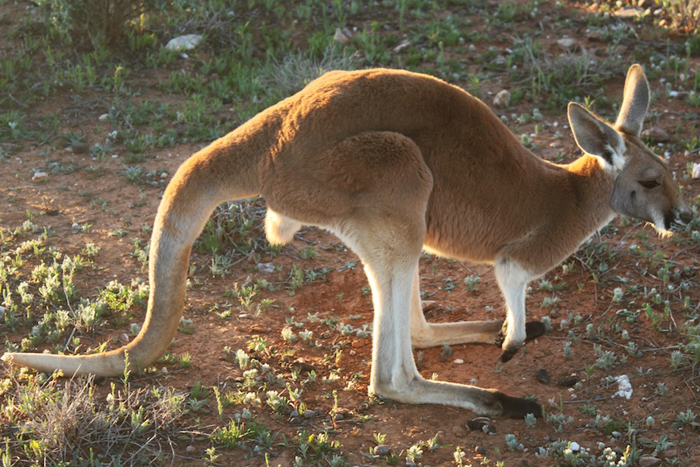
A red kangaroo stands at the Fowlers Gap Arid Zone Research Station in New South Wales, Australia, which was established in 1966.
Taking a step
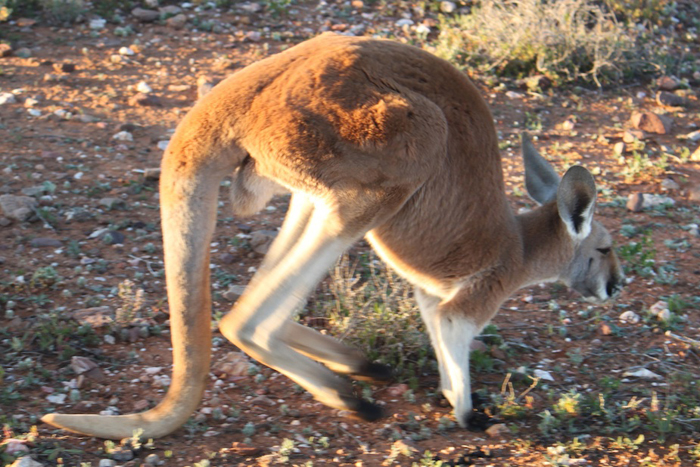
A red kangaroo shows off its pentapedal walk at Fowlers Gap Arid Zone Research Station in Australia. The kangaroo puts down its front limbs and tail while moving its back legs forward in unison.
Sign up for the Live Science daily newsletter now
Get the world’s most fascinating discoveries delivered straight to your inbox.
Pushing ahead
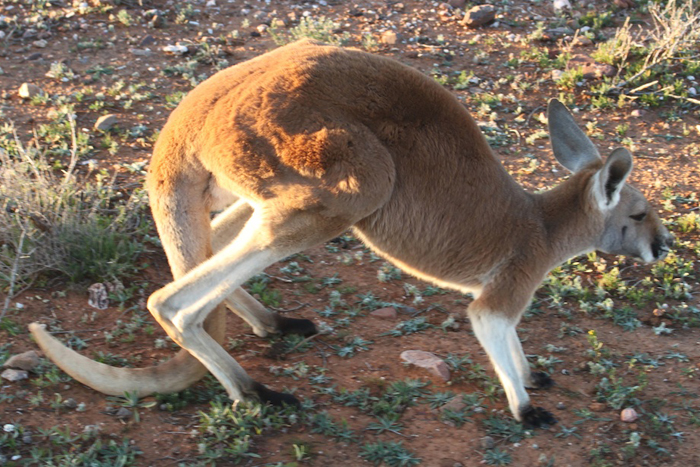
A red kangaroo in the midst of its pentapedal stride at Fowlers Gap Arid Zone Research Station. The kangaroo's tail acts as a leg to propel the kangaroo forward.
Moving forward
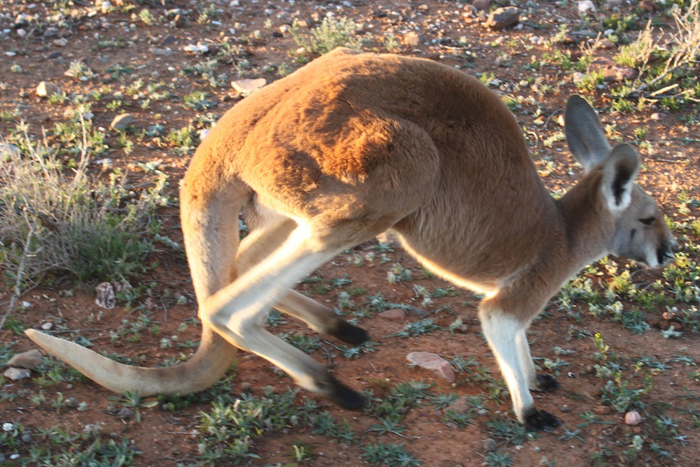
A red kangaroo mid-stride. Kangaroos are the first known animals to use their tail as a leg while walking. Though larger red kangaroos are known to reach a running speed of some 40 mph (64 km/h), bounding as far as 26 feet (8 m) and as high as 9.8 feet (3 m), according to the Museum of Zoology, they more typically bound about (1.2 to 1.9 m) at a time on average.
A step ahead
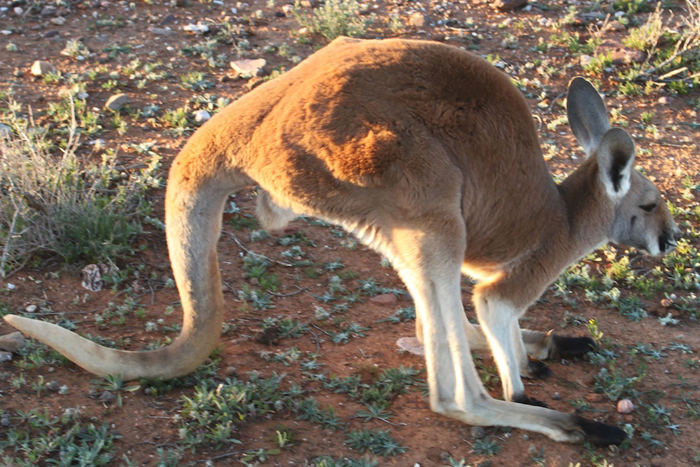
A red kangaroo completes a step using all four limbs and its tail.

Stephanie Pappas is a contributing writer for Live Science, covering topics ranging from geoscience to archaeology to the human brain and behavior. She was previously a senior writer for Live Science but is now a freelancer based in Denver, Colorado, and regularly contributes to Scientific American and The Monitor, the monthly magazine of the American Psychological Association. Stephanie received a bachelor's degree in psychology from the University of South Carolina and a graduate certificate in science communication from the University of California, Santa Cruz.









